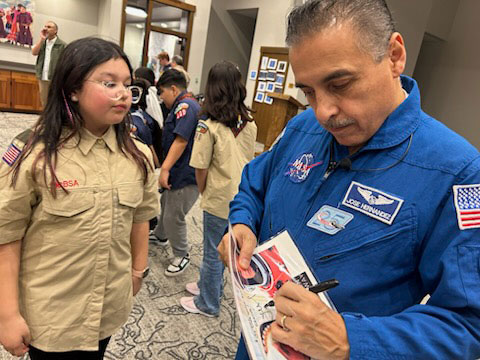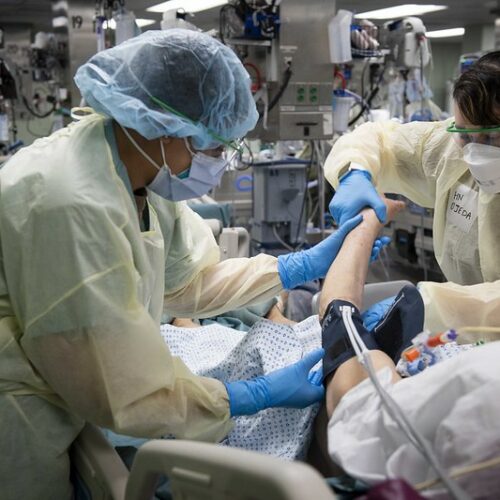
How Conservationists Are Using AI And Big Data To Aid Wildlife
BY JOSEPH WINTERS
Give Jason Holmberg 10,000 zebra photos and he’ll find the specific individual zebra you’re looking for, no problem.
“It could take two minutes,” he said.
Holmberg won’t personally sort through the photos — it’s his software that will. Holmberg is executive director of the nonprofit Wild Me. The Portland-based organization has developed a digital tool called Wildbook that uses artificial intelligence and machine learning to expedite wildlife identification. In tandem with citizen science, Wildbook is able to condense years of human work — like photographing thousands of animals and identifying each by hand — into a matter of weeks.

The Portland-based nonprofit Wild Me has developed a tool called Wildbook. It uses artificial intelligence to identify individuals in a species. It can analyze 10,000 photos of zebras to locate a particular individual in two minutes.
CREDIT: WILD ME
In research and in daily life, AI is rapidly changing the way things work. With some savvy software engineering, computers can learn to carry out complex, tedious tasks — whether it’s detecting cancer cells, operating driverless race cars or analyzing hockey plays. And as Wildbook shows, AI is giving conservation a makeover, too.
“It blows human efforts out of the water,” Holmberg said.
For example, in 2016 researchers in Kenya organized a two-day event in which volunteers drove over prescribed regions of the country, taking pictures of all the zebras they could find. The team of over 350 scientists, government officials, park rangers and community members collected more than 40,000 photos in total.
“It would be impossible for a research team to take all those photos, let alone analyze them,” said professor Chuck Stewart, head of the Computer Science department at New York’s Rensselaer Polytechnic Institute.
Instead, citizen scientists were enlisted for data collection and Wildbook’s AI algorithms helped researchers identify every zebra in just a few weeks. The Kenyan government even recognized the results of the study as the country’s official zebra census.
For each photo submitted to the system, Wildbook scans the image for signs of wildlife, filtering out background data like trees and brush. Then another algorithm steps in to identify not only the animal’s species but its individual identity.
“Rather than just ‘this is a humpback whale,’ it says ‘this is Willy the humpback whale,’” Stewart explained.
Wildbook can do this because many animals have unique markings that distinguish them from other members of their species, “like a bar code,” explained Dan Rubenstein, professor of zoology and program director of environmental studies at Princeton.
For zebras, it’s their stripes. With whales, it’s the curvature on the edge of their fins. Soon, researchers hope to identify elephants by the shape of their ears, which flicker before they charge, or even primates, which may be identifiable with facial recognition technology.
As for the accuracy of these automated IDs? For some projects, “it gets it right about 99 percent of the time,” said Rubenstein, who tests the software in his field work on Kenyan zebra populations. He also provides ecology and biology guidance to the Wildbook team.
The population data created with Wildbook’s help can be used for much more than a census. At Oregon State University’s Marine Mammal Institute, professor Scott Baker uses the software to understand humpback whale migrations in the South Pacific. Other researchers have used it to learn about risk mitigation behavior in giraffes.
But most importantly, Wildbook is a tool for conservation. By encouraging citizen participation and with the speed of AI-driven data processing, Holmberg hopes to quicken the creation and evaluation of conservation strategies.
The arrival of tools like Wildbook comes at time of growing concern for global biodiversity. In March, a United Nations panel released a collection of reports finding that plant and animal species in every part of the world were under severe threat. By some estimates, as many as 200 species are lost each year. Some have gone so far as to say that we are witnessing Earth’s most devastating extinction event since the end of the dinosaurs, 65 million years ago.
Researchers are calling for a collaborative effort to protect biodiversity.
“From accountants to IT developers and machine learning experts, all of these are desperately needed to elevate wildlife conservation to the 21st century,” said Wild Me software engineer Drew Blount.
This includes citizen scientists, as well. For researchers and AI software developers, smartphone cameras represent data-collection game-changers. And a platform like Wildbook can make submitting data easy and accessible.
Partnerships with tech giants can offer conservation-minded nonprofits the resources to grow beyond their limited means. The Rainforest Connection, for example, uses Google’s Tensorflow technology to monitor the Amazon Rainforest, listening in for signs of illegal chainsaw activity.
A similar opportunity materialized for Wildbook this June when Microsoft announced it would back the nonprofit as part of its AI for Earth program. By providing access to more expansive cloud computing and AI resources, the partnership will help make Wildbook more accessible to researchers and citizen scientists.
“It’s gonna be huge,” said Rubenstein.
Before AI for Earth, images submitted to Wildbook had to bounce between imaging software and database software, from algorithm to algorithm, as part of the cataloging process. “That’s not an efficient way to digest hundreds of thousands of images,” Rubenstein explained.
But Microsoft’s cloud capabilities will allow data to be compartmentalized. Instead of haphazard organization on isolated computers, data will be stored online.
In addition to improving data management, the Wild Me team also plans to use AI for Earth’s support to give Wildbook a facelift. An improved user interface will keep users engaged and eager to continue submitting photos.
In the future, Holmberg and his colleagues hope that AI and machine learning will continue to ease human researchers from the burden of tedious tasks. One example is the whale shark YouTube scanner, which scours the web for relevant videos of whale shark sightings.
Every 24 hours the software finds videos titled or tagged “whale shark,” downloads them, reads the description, and uses machine learning to identify which individual whale shark (if any) appears in the video. The software can even use geolocation information to disregard videos shot in an aquarium and ask real YouTubers for more information by posting a comment.
It sounds like the stuff of the future, but the technology is already being deployed. “It’s what we might call an informatics revolution,” said Baker. He and fellow researchers, conservationists, and citizen scientists are hopeful that by making data more accessible and interpretable, Wildbook can help solve — or at least mitigate — the biodiversity crisis.
Related Stories:

How does climate affect your life? Tri-Cities survey open now
Cities, towns and counties are starting to plan for a future with climate change. Now, the Tri-Cities area is asking people about regional hazards and historical trends. (Credit: Simon Foot

Canadian leaders hope trade negotiations won’t derail Columbia River Treaty
A view of the Columbia River in British Columbia. The Columbia River Treaty is on “pause” while the Trump administration considers its policy options. However, recent comments by President Donald

Searching for sage grouse: Looking for a chicken-sized needle in south-central WA
Seth Hulett, Audubon Washington’s senior program manager of the Columbia Plateau, searches through his spotting scope for sage grouse. (Credit: Courtney Flatt / NWPB) Listen (Runtime 4:12) Read In south-central















